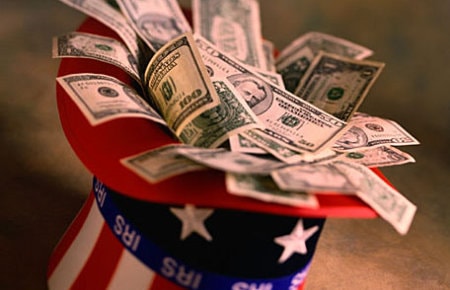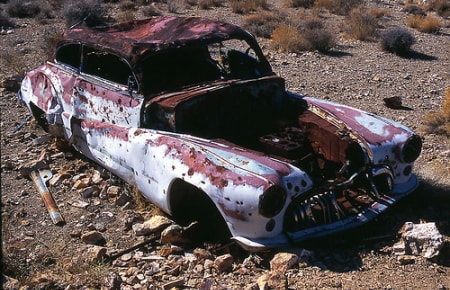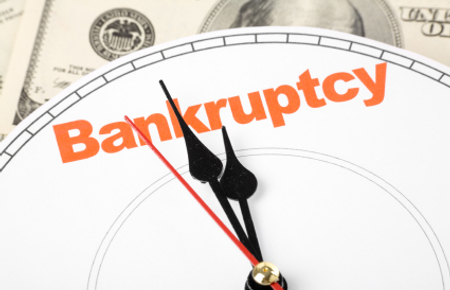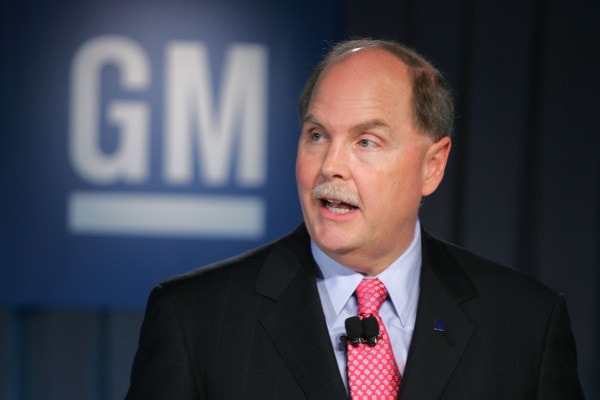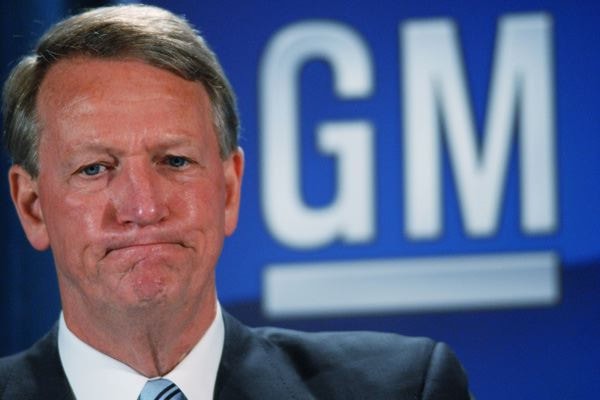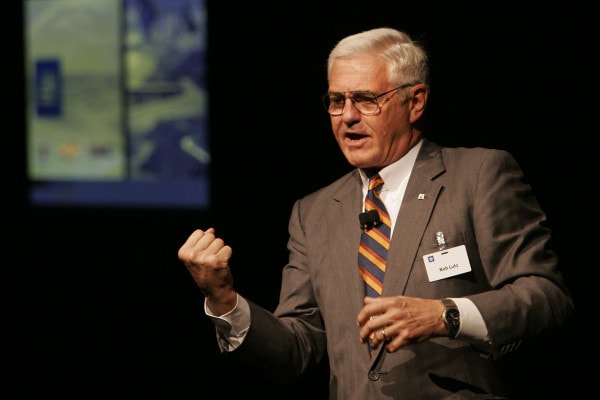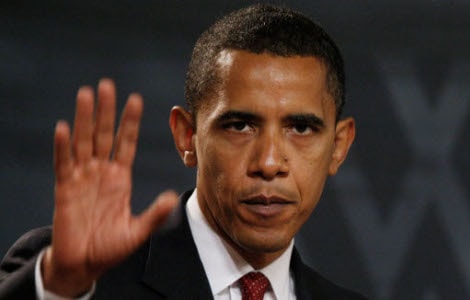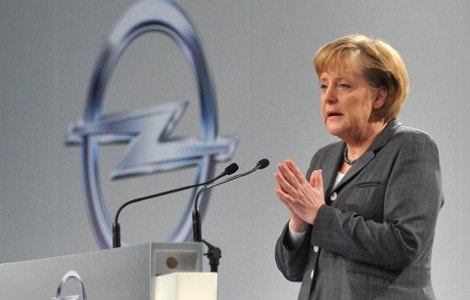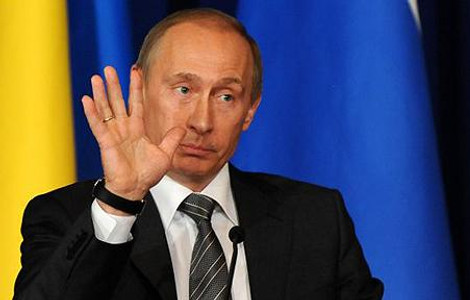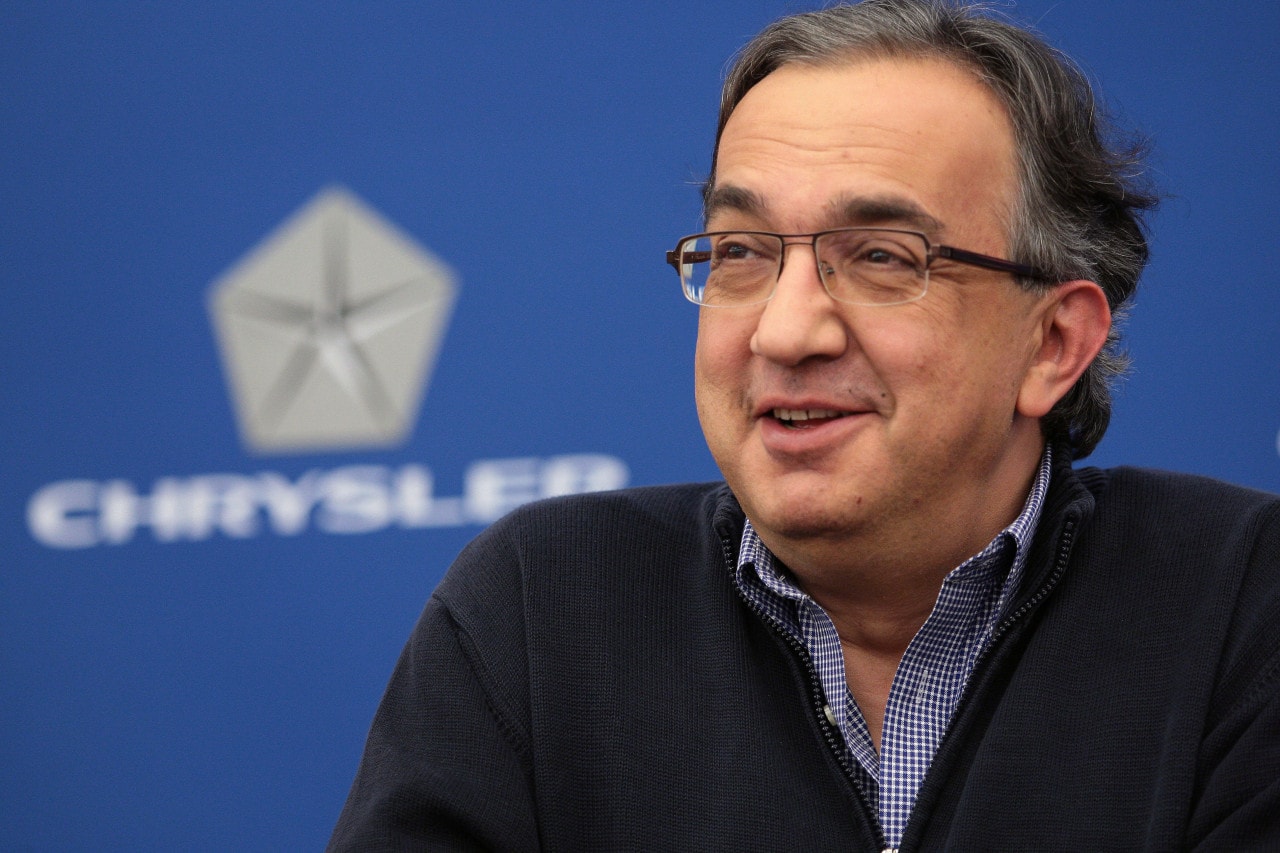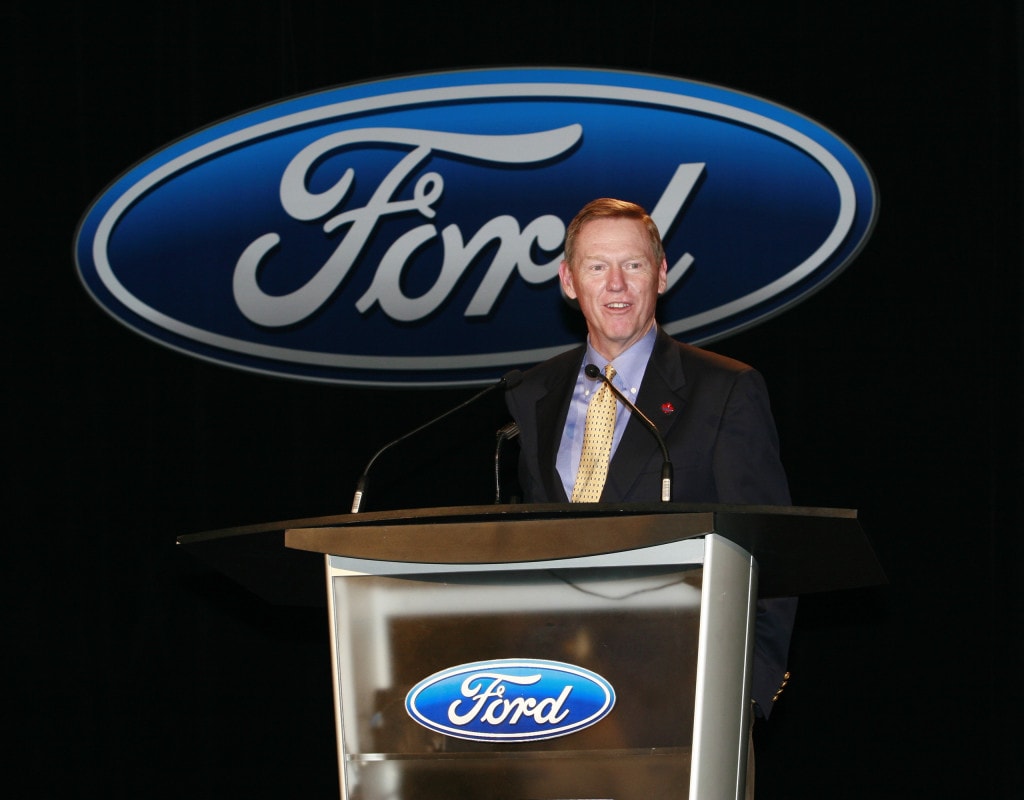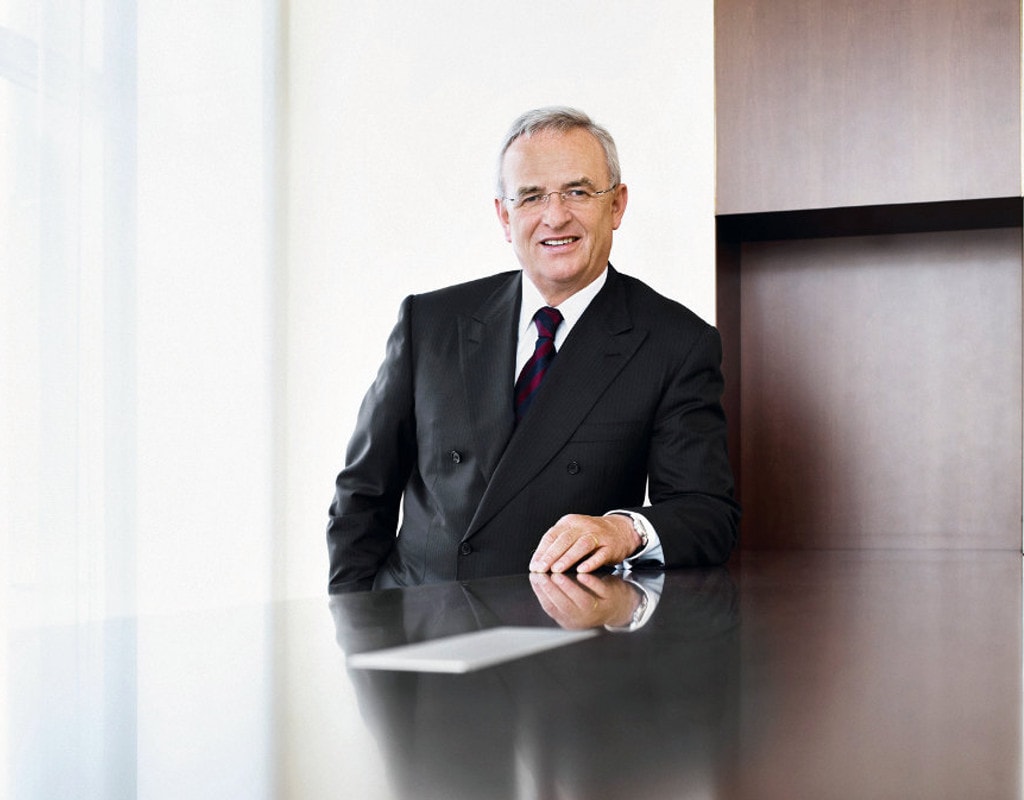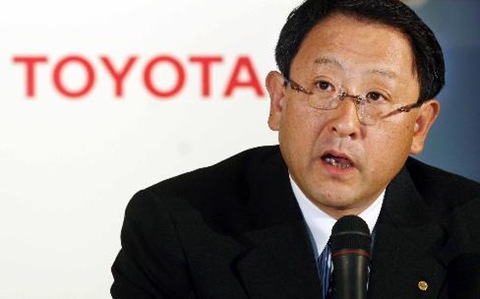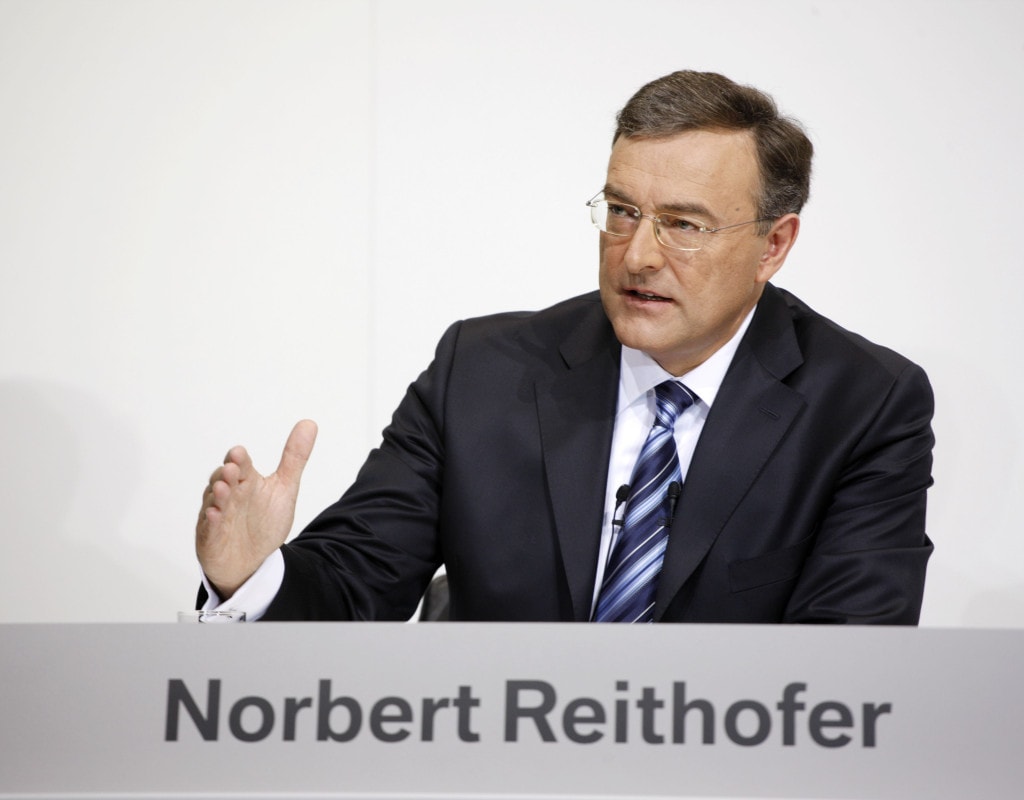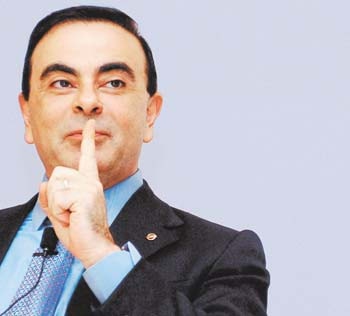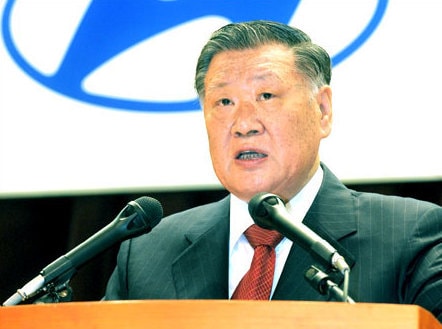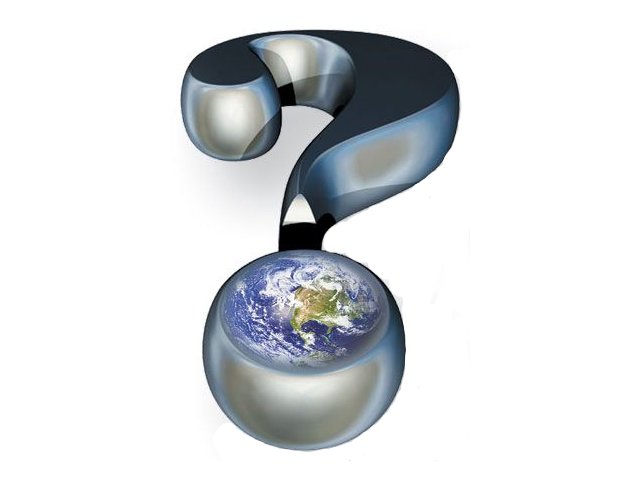CHAPTER 1: GM - THE NEVERENDING STORY
CHAPTER 2: CHRYSLER AND FIAT - A MATCH MADE IN HEAVEN
CHAPTER 3: FORD - THE LITTLE ENGINE THAT COULD
CHAPTER 4: PORSCHE AND VOLKSWAGEN - DAVID MEETS GOLIATH
CHAPTER 5: TOYOTA AND HONDA- THE JAPANESE SURPRISES
CHAPTER 6: BMW AND DAIMLER - HOLDING THEIR LINES
CHAPTER 7: RENAULT AND NISSAN - ZERO EMISSIONS APPROACH
CHAPTER 8: HYUNDAI AND KIA - CHEAPER, BUT BETTER
CHAPTER 9: THE PATH THAT LIES AHEAD
It's a wrap, movie directors say when they get the scenes they want. Although not all car manufacturers got the scenes they wanted in 2009 (by all intents and purposes, 2009 was somewhat of a horror film rather than an action adventure one), the troubled year-that-was is going down and, some hope, will take with it all the hardship of the all-mighty, acclaimed economic crisis.
Truth be told, we really think the efforts made this year to save a dying industry (especially in North America) will take their toll in the years to come.
For instance, between the US having pumped $82 billion into the auto sector in 2009 and its admission that it will never get back at least $30 billion out of that money, we are left with a bitter image: the US owns large stakes in two out of the three big American manufacturers.
Toyota's leadership in the industry was severely damaged this year by both the crisis and the screw-ups made when building its cars, Porsche is no longer the company we know, following its David meets Goliath stunt it pulled with giant Volkswagen, the European brands (Opel/Vauxhall, Saab, Jaguar Land Rover, and others) were, for the better part of the year, in disarray and the list can go on and on and on.
People had to be redrawn to the auto segment no matter what, so companies came up with improved car aerodynamics, unified car platforms, complex cost-cutting schemes (which, truth be said, mostly relied on job cuts), interchangeable car components and the ever working psychological scheme (do your part thing, be green).
All these happened while representative car companies struggled with day-to-day existence and while all the major players turned their attention to emerging car markets like China, hoping for record sales. On the other hand, companies began to see the problems associated with a sudden shift from petrol derivatives: the monumental effort to adapt the required infrastructure, the colossal costs of development and the market’s reorientation from automotive spending.
We will try, in the piece you are reading, to give you a brief insight of what was and what is. Maybe some of you will come to figure out, after reading this, what will be, because, we admit, we find it very difficult to wrap our head around the future of this industry. Mind you, the importance of the industry is huge: in the US alone, one out of every 10 people is employed in a service that is related to the auto industry.
We understand from the very beginning some of our selections might not correspond with what you regard as a major automotive event from 2009 and that’s why we encourage you to share your views on the subject.
GENERAL MOTORS - DECEPTION AND HUMILITY
With heavy storm clouds looming over head ever since the end of 2008, the General's generals took to DC in a last ditch attempt to raise some taxpayers' money. And they did, despite the outrage they caused by flying their company jets to the capital and despite the following official letter sent to the media in late-2008:
"While we’re still the U.S. sales leader, we acknowledge we have disappointed you. At times we violated your trust by letting our quality fall below industry standards and our designs become lackluster. We have proliferated our brands and dealer network to the point where we lost adequate focus on our core U.S. market. We also biased our product mix toward pick-up trucks and SUVs. And, we made commitments to compensation plans that have proven to be unsustainable in today’s globally competitive industry."
Unfortunately for the taxpayers, the billions they received ($17.4, to be precise) in mid-December 2008 weren't enough and by January 2009, the company's bank accounts were growing awfully thin. Fritz Henderson, at the time GM president and chief operating officer, said GM would run out of money by March 31. As promised, they did run out of money, perhaps one of the last promises GM kept in 2009.
The agony of the GM we knew and (some) loved ended in June, when the General succumbed to its financial injuries. A swift reorganization plan was drafted (for some reason, this couldn't have been done outside Chapter 11), with the total number of assembly, powertrain and stamping facilities in the US to be reduced from 47 in 2008 to 34 by the end of 2010 and 33 by 2012. Overall US employment will decline from about 91,000 at the end of 2008 to about 64,000 at the end of 2009, meaning that a total of 27,000 people have been sent home. The GM which would eventually emerge from bankruptcy (in the middle of July) is now comprised of four US based core brands: Chevrolet, Cadillac, Buick and GMC. All four will have a total of just 34 U.S. nameplates by 2010.
Having chosen to keep only four of its children, GM engaged in a bitter fight to get rid of the rest: Hummer, Saab, Opel/Vauxhall, Pontiac and Saturn. For some (Saturn), the fate was somehow known ever since late 2008. For others (Saab), what would follow would take everyone by surprise.
The story of Hummer, Pontiac and Saturn is short and cruel. Pontiac, after slowly drifting to the edge of GM's line-up will fall off the cliff in the near future, despite some of its dealers' attempts to buy it. GM announced in late November that the last Pontiac, a white G8 sedan, rolled off the assembly line in Orion Township.
Saturn was doomed after GM began its we'll sell it-we'll sell it not madness. After having talked with Penske Automotive Group about the sale of Saturn for months and agreeing on the sale (June), the American manufacturer changed its mind and announced, in October, the termination of both the Saturn brand and its dealership network.
Hummer's fate is, apparently, sealed. If nothing better comes along, it will be given to Sichuan Tengzhong Heavy Industrial Machinery, as stipulated in the definitive agreement signed in October. The document states Hummer will be bought through an investment entity by Tengzong, who will own 80 percent of the company and Suolang Duoji, a private entrepreneur, who will own the remaining stake.
As far as Opel is concerned, the brand and its projected sale managed to ignite some old sparks in Europe (Germany clashed, at times, with Russia, as well as with the US), engulfed the European Union, together with some of its structures and several countries, led to street protest in Germany, Spain and Belgium, made auto companies clash with their own suppliers/car builders (Volkswagen vs. Magna and BMW vs. Magna) and, overall, involved some type of interested party from no less than three continents (four, if we are to consider China's minor takeover attempt).
Long story short, GM started with two strong suitors for Opel, Magna and the apparently unstoppable Marchionne-led Fiat. Bored by the slow-paced deal, Fiat decided to back down, and left Magna the sole strong bidder for the German brand. The sweet victory for Magna came in May, when it was announced (and we all saw, on TV, the waves of celebration in Germany, Belgium and Canada) that Magna will be Opel's next owner.
It wasn't meant to be and, apparently, the day of celebration will cause, in the months to come, more problems for Magna than they would have ever envisioned. Sometimes after the fateful May day, along came RHJ, a Belgium-based investment group which charmed GM into prolonging the Opel soap-opera well into November.
The bitter battle between Magna and RHJ engulfed, slowly but surely, several Russian companies (Sberbank, GAZ), one president (Barak Obama), one chancellor (Angela Merkel), one prime minister (Vladimir Putin), several European carmakers (Volkswagen and BMW), several EU countries (Germany, Spain, Belgium), countless Opel workers and countless other groups, companies and people. By all intents and purposes, the battle GM was waging on the western front was heating up.
Salvation came, as before, from the West, were things began to clear up. GM's bankruptcy was over, it had a new CEO (Fritz Henderson replaced Rick Wagoner, who was ousted after a tete-a-tete with the Obama administration in March) and the US government was getting ready to launch the Car Allowance Rebate System (CARS) and jump-start the dying auto sector.
Slowly, GM began to see dollar signs again. How did this affected Opel? Well, GM started contemplating the idea of keeping it. After all, the finances were getting better and, since so many fight over it, it might be worth something, right?
Magna's love affair with Opel and GM ended in November, when GM gave the world a "sample of American culture", as prime minister Vladimir Putin called it: it decided to keep Opel. How did the company motivate its decision?
“GM’s overall financial health and stability have improved significantly over the past few months, giving us confidence that the European business can be successfully restructured." Still, no restructuring plan will be submitted by the end of the year (mind you, the decision was made at the beginning of November).
The last "sample of American culture" came with the decision regarding Saab. After having nearly struck a deal with Koenigsegg for the sale of the Swedish brand, the same thing that happened with Saturn and Opel took place here as well, in November: GM backed down, for unknown reasons, and decided to sell some Saab technology (intellectual property for Saab's 9-5 and 9-3 sedans and additional equipment) to Chinese company BAIC. The future of the brand's remains is yet to be decided but, in all likelihood, Saab the carmaker will eventually cease to exist.
2009 was, for GM, the reinvention year. In 2009, GM lost Pontiac, Saturn, Saab, Hummer. GM lost Rick Wagoner, Fritz Henderson, Carl-Peter Forster. In 2009, GM lost countless of its employees (including here the personnel of the closed dealers), sacrificed on the crisis' shrine. And, most of all, GM lost its self-esteem. In 2009, overall, GM lost. But not all.
The American manufacturer grew like Prince Charming in China and prospects are it will keep on doing so. GM gained points (and, perhaps, a better future) when it managed to convince Bob Lutz to come back. All struggles aside, GM kept Opel in 2009, one of the best known, most respected European brands. In an often seen unlikely scenario, GM began repaying the loans it received this year from the US government.
Only one hurdle remains for GM to overcome in the years to come: re-become independent. When, eventually, the US government will back out, we will all see if GM learned anything from this year's lessons; we will all see if GM learned the most important lesson of 2009: humility.
CHRYSLER AND FIAT - HOW IT CAN BE DONE
The second American manufacturer to seek protection under Chapter 11 (to be politically correct, Chrysler filed for bankruptcy earlier than GM, in April) managed to handle 2009 a bit better than its Detroit 3 rival. Although GM and Chrysler were involved in some type of a strange courtship towards the end of 2008, the failure of such a marriage presented Chrysler with an even better suitor: Fiat. Brilliantly led into battle by Sergio Marchionne, Fiat managed to navigate through all the hurdles and obstacles thrown in their path by all those who opposed them and got a 30 percent stake of the American company (for starters, as in the near future will acquire more and more), in exchange for the promise they would turn it around.
When the assets sale was approved by the United States Supreme Court in June, Fiat went to work and began drafting the five year business plan they presented in early December. Fiat's plan calls for Chrysler to break even next year, with a projected profit in 2011. It will bring to the US three Italian built vehicles: a subcompact hatchback, a compact sedan and a midsize sedan (read Fiat 500 and the replacements for the Dodge Caliber and Avenger). Chrysler will scrap the aforementioned Dodges, kill the Viper in 2010 (but only after a very special, 500 units limited edition of the Viper are released) and scrap the Patriot and Compass in 2012. Viper's replacement, to be built together with Fiat, will come in 2012. The Jeep brand will receive a new version of the Liberty in 2013, together with another two Fiat-based models.
In a nutshell, that's all that went on in Chrysler's backyard this year. Chrysler did not have the huge pile of non-profitable brands to get rid of, like GM did. So it chose to focus more on how its products will be structured in the years to come, rather on what the corporate structure would be, as in GM's case.
As was the case with GM, Chrysler lost big sales numbers to the crisis and a few hundred dealers. It also lost men and women. Chrysler's biggest gain in 2009 is Fiat. As the company proved in recent years to be unable to run itself (owned by Daimler, than by Cerberus and now by Fiat), Marchionne's steady hand guiding its steps in the years to come was just what the doctor prescribed in 2009.
As for Fiat, the Italian manufacturer was one of the few who wanted and, more importantly, were able to take full advantage of the decline other carmakers were experiencing. After taking Chrysler, Marchionne took aim at Opel, but chose to exit, chin up, from what was clearly becoming a GM tornado. Fiat faced at home the same challenges of the 2009 crisis, but managed to get in the clear. Its future is now tied with that of Chrysler, the company which opened the doors to one of the biggest auto markets in the world: the US. Fiat needs to invest little to get in there; Chrysler has facilities which Fiat will use, it has the dealership network in place (all that's left), Chrysler has the image Fiat may use should "made in Italy" look bad in the eye of the American consumer (we mean here the plans to sell Lancia as a Chrysler in the US).
FORD - HOW IT SHOULD BE DONE
Out of the Big Three auto manufacturers from the US, Ford has been the only one to manage to survive 2009 without any state aid or government intervention (aside, of course, from the money received to develop better car technologies). The company understood from the beginning of the year the importance of restructuring and cutting costs. From its models standpoint, it switched focus rapidly to appealing design and fuel efficiency, replacing, for example, the Taurus model after just two years on the market with a jaw-dropping facelift.
Economically, Ford managed to set in motion a plan which will allow it to post a surprising $1 billion net income for the third quarter of 2009. It managed to do so without making a big fuss about it. Its cost cutting plan involved, perhaps more than with any other American manufacturer, its entire workforce. The same workforce which, in November, decided to reject the revisions proposed in the UAW contracts. This is, perhaps, Ford's biggest failure of 2009.
Another important news that surrounded Ford Motor in 2009 was the potential sale of Swedish car maker Volvo. Taking a "say little, do more" approach, Ford announced in December it has settled all the terms of a future agreement with Chinese company Zhejiang Geely Holding Group for the sale of the Swedish brand Volvo. The deal is scheduled to be finalized in early 2010.
Overall, Ford didn't lose much in 2009, apart from the, at times, discouraging sales reports. Ford took advantage of a slow 2009 to prepare the way for the launch of the Fiesta model on the US market, promoting it heavily via Internet social networks, an approach never before undertaken by a carmaker. The Fiesta arrives in the US in 2010 and makes Ford dream it will have the same success it had in Europe, where it is segment leader.
PORSCHE AND VOLKSWAGEN - SILENTLY TOWARDS THE TOP
The second big story of the year, besides the one of GM, is that of the soon to be Volkswagen-Porsche merger. In the beginning of 2009 (January), Porsche announced it has increased its stake in Volkswagen to 50.76 percent. The financial effort made to get to that percentage proved fatal for Porsche, which slowly began facing a huge debt - at least 9 billion euro. Slowly by surely, Volkswagen, aggressively led by Ferdinand Piech, began pressing Porsche into an alliance.
What followed was a bitter war between Ferdinand Piech/Volkswagen and Wolfgang Porsche/Porsche, a battle which will eventually lead to Porsche's defeat. In July, the man behind Porsche's attempt to take over VW, Wendelin Wiedeking, is ousted together with Holger Haerter and replaced with Michael Macht and Thomas Edig, respectively. In November, Volkswagen appoints two of its top managers - Martin Winterkorn and Hans Dieter Potsch - on Porsche's board of management. In December, Volkswagen officially announced the acquisition of 49.9 percent stake in Porsche AG, with the merger between the two scheduled to be completed in 2011.
Otherwise, it was all peace and quiet on the German front. Volkswagen carried out a series of cost-reducing measures as well, but the key to its predicted success laid in the fact it brought to the market an affordable and reliable car, tailored to every customer’s demand. The Chinese car market proved especially important for Volkswagen, where it managed to retain a top position through alliances with domestic car companies. The company’s premium brand Audi, managed strong global results, but the group’s success lies in the already voted reinvestment of most of its profit for improving vehicles line up and meeting future consumer demand.
Overall, 2009 proved to be fatal for Porsche, who didn't manage to get control of Volkswagen and found itself run over by the VW stampede which followed. For Volkswagen, 2009 meant salvation from a Porsche ownership and the launch in a worldwide offensive to become the no.1 carmaker by 2018. Still, the shopping frenzy in which Volkswagen finds itself at this time may prove hazardous to its health and makes us wonder if the German carmaker will become, in the years to come, a second GM (remember, Volkswagen owns Audi, Skoda, Seat, Bentley, Bugatti, Lamborghini, Volkswagen Commercial Vehicles and Scania AB).
TOYOTA AND HONDA - THE BAD AND THE GOOD
The biggest loser of the year (no, it is not GM!) was Japanese carmaker Toyota. Having started the year with a $6.9 billion financial loss for the first three months of 2009 (part of fiscal year 2008), Toyota cut its annual dividend by 30 percent for the first time since 1994. The huge losses incurred by the biggest manufacturer of the world forced the appointment of Akio Toyoda as president of the company, as well as the naming of four new executive vice presidents and eight new board members.
Toyoda took charge of "the ship sailing in a storm," as he called it and set out to "start from rock bottom." Toyoda and his team devised a plan based on the projected success of its models. In June, Toyota said it is able to return to profit by using only 70 percent of its production capacity and thus reduce costs to the minimum level.
The hope of a new future for Toyota were shattered by the same Toyoda in October, when the president said the company is "very close to capitulation to irrelevance or death.” After in 2008, the world's no.1 carmaker sold 8.97 million vehicles, the 2009 numbers showed a total of 7.3 million this year, both figures way below the 10 million units target Toyota once had.
Toyota is facing problems on other fronts as well. The recent scandal between the manufacturer in the US and Dimitrios Biller, as well as the huge 3.8 million recall due to a loose floor mat that could force down the accelerator, do nothing than to add to the problem baggage Toyota is now carrying.
Honda on the other hand was the first to signal the unprecedented impact the crisis had on the global automotive industry by withdrawing from the most important auto sport, Formula One. The company’s swift and definitive decision took many by surprise, but offered Honda the opportunity to redirect costs for developing fuel efficient vehicles with an emphasis on the now modern hybrids. Another major step Honda took in 2009 was to shift production of major car parts to cheap-labored countries like India.
BMW AND DAIMLER - THE GERMAN PRECISION
These two large car manufacturers from Germany sailed through a turbulent 2009 like a battleship through storm, or at least that’s the impression they left us with. Both BMW and Mercedes-Benz went about their businesses as usual, introducing new models and technologies for their vehicles. While sales suffered as expected from a regressing market, both BMW and Mercedes Benz retained their overall composure and financial stability. The two German carmakers were, in the beginning of the year (March), believed to consider a 7 percent swap in shares to help them cope with the crisis. Even if the partnership did not come true, BMW and Daimler are already working on a plan for joint purchasing in the North American Free Trade Area (NAFTA).
Daimler set in 2009 the scene for the years to come by beginning construction of a new facility for the future generation A- and B-Klasse in models starting 2012, in Kecskemét, Hungary. It also debuted production of the second generation electric smart fortwo in Hambach, France.
Daimler bought a 10 percent stake in electric car maker Tesla Motors, in order to secure the future of its electric vehicle fleet and debuted a very well received new E-Klasse line. As far as its models are concerned, another major event for Mercedes-Benz this year was the reinvention of the classic Gullwing as the SLS AMG grand tourer. As far as the carmaker's sports endeavors go, Daimler bought 75.1 percent (together with Aabar Investments PJSC) of the Brawn GP F1 team, out of which Daimler’s share amounts to 45.1 percent.
BMW kept busy this year with the introduction of several premium models in a time of... shall we say, financial panic. 2009 saw BMW field brand new models like the controversial 5 Series Gran Turismo, the new X1 and the new 5 Series sedan. Additionally, BMW debuted the M versions for the X6 and X5 SUVs, making them the first M-Sport vehicles to take advantage of all-wheel drive traction and turbochargers.
RENAULT NISSAN - MAKING THEIR OWN WAY
Somewhat oblivious to the struggles of the rest of the industry, the alliance between the French from Renault and the Japanese from Nissan chose to look ahead, instead of trying to settle old issues. The partnership, materialized under the Zero Emission alliance title, has continued to pave the way for the future line-up of electric vehicles the two manufacturers have planned for the years to come.
The partnership struggles to set in place some type of collaboration with every one of its markets, to prepare the infrastructure needed for the arrival of the EVs. In all, the two manufacturers have signed agreements in this field with no less than 40 governments, municipalities and companies worldwide.
For Renault, the only problems this year came from Russia, were its partnership with Russian car builder AvtoVAZ came under prime minister Vladimir Putin's scrutiny. After almost half of year of trying to decide what part Renault would play in the future of AvtoVAZ, the French announced they will give the Russian automaker a 240 million euro non-cash package that will contribute to the company's efforts of staying away from bankruptcy. The package will include the transfer of technologies, production machinery, equipment and expertise in support of the production of new vehicles based on the B0 (Logan) platform. The French carmaker will also help AvtoVAZ create a Lada Classic replacement.
HYUNDAI AND KIA - FOSTER THE CONSUMER'S APPETITE FOR CHEAPER VEHICLES
The two South Korean automakers enjoyed a good year in 2009, despite the evident market contraction. Somewhat protected from the turmoil of the North American and European markets, these companies succeeded in bringing satisfactory quality and reliability at very competitive pricing.
With the average household budget for new cars going down significantly, Hyundai and Kia had to take advantage of the newly created environment by fielding redesigned cars and stacking them up with new, environmentally friendly technologies. The tell tale sign of how well the Korean companies did came from Japanese rivals when they admitted both Kia and Hyundai made notable progress in quality.
The best example to support this claim came from the Hyundai Genesis model. With this full-size luxury sedan the South Korean car company set out to successfully make its mark in the aforementioned segment and change the consumer’s perception of the brand as a budget car.
In remains to be seen whether the two companies can keep up with the demands of the new automotive market and how the vehicles they've launched this year will perform (in terms of sales performances) in the year ahead.
THE WINDING ROAD TO UNCERTAINTY
With all the major changes 2009 brought to the worldwide auto industry, it is very hard to predict an accurate future development of the field, but we can sum up a list of probable happenings 2010 will bring along. 2009 showed the importance of hybrid and electric powered vehicles and will most likely spark the consolidation of the required infrastructure. The government funded programs meant to stimulate new car sales reached a global scale in 2009 and could have settled an undesired precedent for the upcoming years. What we suggest here is that worldwide sales could never reach their early figures in the following years, as people got used to significant discounts before purchasing a new vehicle.
Future financial measures pushed by automotive corporations will likely carry on the cost cutting plans adopted in 2009 and unfortunately will continue to affect worldwide jobs. The plans established in 2009 regarding a vehicle’s fuel consumption and polluting levels will continue to evolve, as they have already turned out to be of critical importance to the environmental protection goals agreed upon by all the automotive manufacturers. Beside, they also turned out to be a powerful marketing tool...
We can expect in the near future a significant number of production facilities to be shifted in countries with cheap labor costs, while most car makers will focus on emerging economies and particularly the Chinese market. We believe China will rise in importance in 2010 not only as consumer market, but as a production partner as well. While we left out other important automakers like French PSA Peugeot-Citroen and British Jaguar Land Rover, we expect them to really have a say in 2010. PSA already aims for the Chinese market and since it has presented this year several fuel efficient vehicles and electric powered ones we can expect to see them production ready in 2010 (we think for example of Peugeot RCZ Hybrid4 and 3008 Hybrid).
In the end we don’t think 2010 will be the year of economic comeback, but will be the year when the results of the policies implemented by most corporations in 2009 will start to show their worth. The auto sector will possibly see a minor boost next year, but with urban congestion growing by the year, we ask ourselves how many more cars can be sold before we completely remain trapped in our houses.
CHAPTER 5: TOYOTA AND HONDA- THE JAPANESE SURPRISES
CHAPTER 6: BMW AND DAIMLER - HOLDING THEIR LINES
CHAPTER 7: RENAULT AND NISSAN - ZERO EMISSIONS APPROACH
CHAPTER 8: HYUNDAI AND KIA - CHEAPER, BUT BETTER
CHAPTER 9: THE PATH THAT LIES AHEAD
It's a wrap, movie directors say when they get the scenes they want. Although not all car manufacturers got the scenes they wanted in 2009 (by all intents and purposes, 2009 was somewhat of a horror film rather than an action adventure one), the troubled year-that-was is going down and, some hope, will take with it all the hardship of the all-mighty, acclaimed economic crisis.
Truth be told, we really think the efforts made this year to save a dying industry (especially in North America) will take their toll in the years to come.
For instance, between the US having pumped $82 billion into the auto sector in 2009 and its admission that it will never get back at least $30 billion out of that money, we are left with a bitter image: the US owns large stakes in two out of the three big American manufacturers.
Toyota's leadership in the industry was severely damaged this year by both the crisis and the screw-ups made when building its cars, Porsche is no longer the company we know, following its David meets Goliath stunt it pulled with giant Volkswagen, the European brands (Opel/Vauxhall, Saab, Jaguar Land Rover, and others) were, for the better part of the year, in disarray and the list can go on and on and on.
People had to be redrawn to the auto segment no matter what, so companies came up with improved car aerodynamics, unified car platforms, complex cost-cutting schemes (which, truth be said, mostly relied on job cuts), interchangeable car components and the ever working psychological scheme (do your part thing, be green).
All these happened while representative car companies struggled with day-to-day existence and while all the major players turned their attention to emerging car markets like China, hoping for record sales. On the other hand, companies began to see the problems associated with a sudden shift from petrol derivatives: the monumental effort to adapt the required infrastructure, the colossal costs of development and the market’s reorientation from automotive spending.
We will try, in the piece you are reading, to give you a brief insight of what was and what is. Maybe some of you will come to figure out, after reading this, what will be, because, we admit, we find it very difficult to wrap our head around the future of this industry. Mind you, the importance of the industry is huge: in the US alone, one out of every 10 people is employed in a service that is related to the auto industry.
We understand from the very beginning some of our selections might not correspond with what you regard as a major automotive event from 2009 and that’s why we encourage you to share your views on the subject.
GENERAL MOTORS - DECEPTION AND HUMILITY
With heavy storm clouds looming over head ever since the end of 2008, the General's generals took to DC in a last ditch attempt to raise some taxpayers' money. And they did, despite the outrage they caused by flying their company jets to the capital and despite the following official letter sent to the media in late-2008:
"While we’re still the U.S. sales leader, we acknowledge we have disappointed you. At times we violated your trust by letting our quality fall below industry standards and our designs become lackluster. We have proliferated our brands and dealer network to the point where we lost adequate focus on our core U.S. market. We also biased our product mix toward pick-up trucks and SUVs. And, we made commitments to compensation plans that have proven to be unsustainable in today’s globally competitive industry."
Unfortunately for the taxpayers, the billions they received ($17.4, to be precise) in mid-December 2008 weren't enough and by January 2009, the company's bank accounts were growing awfully thin. Fritz Henderson, at the time GM president and chief operating officer, said GM would run out of money by March 31. As promised, they did run out of money, perhaps one of the last promises GM kept in 2009.
The agony of the GM we knew and (some) loved ended in June, when the General succumbed to its financial injuries. A swift reorganization plan was drafted (for some reason, this couldn't have been done outside Chapter 11), with the total number of assembly, powertrain and stamping facilities in the US to be reduced from 47 in 2008 to 34 by the end of 2010 and 33 by 2012. Overall US employment will decline from about 91,000 at the end of 2008 to about 64,000 at the end of 2009, meaning that a total of 27,000 people have been sent home. The GM which would eventually emerge from bankruptcy (in the middle of July) is now comprised of four US based core brands: Chevrolet, Cadillac, Buick and GMC. All four will have a total of just 34 U.S. nameplates by 2010.
Having chosen to keep only four of its children, GM engaged in a bitter fight to get rid of the rest: Hummer, Saab, Opel/Vauxhall, Pontiac and Saturn. For some (Saturn), the fate was somehow known ever since late 2008. For others (Saab), what would follow would take everyone by surprise.
The story of Hummer, Pontiac and Saturn is short and cruel. Pontiac, after slowly drifting to the edge of GM's line-up will fall off the cliff in the near future, despite some of its dealers' attempts to buy it. GM announced in late November that the last Pontiac, a white G8 sedan, rolled off the assembly line in Orion Township.
Saturn was doomed after GM began its we'll sell it-we'll sell it not madness. After having talked with Penske Automotive Group about the sale of Saturn for months and agreeing on the sale (June), the American manufacturer changed its mind and announced, in October, the termination of both the Saturn brand and its dealership network.
Hummer's fate is, apparently, sealed. If nothing better comes along, it will be given to Sichuan Tengzhong Heavy Industrial Machinery, as stipulated in the definitive agreement signed in October. The document states Hummer will be bought through an investment entity by Tengzong, who will own 80 percent of the company and Suolang Duoji, a private entrepreneur, who will own the remaining stake.
As far as Opel is concerned, the brand and its projected sale managed to ignite some old sparks in Europe (Germany clashed, at times, with Russia, as well as with the US), engulfed the European Union, together with some of its structures and several countries, led to street protest in Germany, Spain and Belgium, made auto companies clash with their own suppliers/car builders (Volkswagen vs. Magna and BMW vs. Magna) and, overall, involved some type of interested party from no less than three continents (four, if we are to consider China's minor takeover attempt).
Long story short, GM started with two strong suitors for Opel, Magna and the apparently unstoppable Marchionne-led Fiat. Bored by the slow-paced deal, Fiat decided to back down, and left Magna the sole strong bidder for the German brand. The sweet victory for Magna came in May, when it was announced (and we all saw, on TV, the waves of celebration in Germany, Belgium and Canada) that Magna will be Opel's next owner.
It wasn't meant to be and, apparently, the day of celebration will cause, in the months to come, more problems for Magna than they would have ever envisioned. Sometimes after the fateful May day, along came RHJ, a Belgium-based investment group which charmed GM into prolonging the Opel soap-opera well into November.
The bitter battle between Magna and RHJ engulfed, slowly but surely, several Russian companies (Sberbank, GAZ), one president (Barak Obama), one chancellor (Angela Merkel), one prime minister (Vladimir Putin), several European carmakers (Volkswagen and BMW), several EU countries (Germany, Spain, Belgium), countless Opel workers and countless other groups, companies and people. By all intents and purposes, the battle GM was waging on the western front was heating up.
Salvation came, as before, from the West, were things began to clear up. GM's bankruptcy was over, it had a new CEO (Fritz Henderson replaced Rick Wagoner, who was ousted after a tete-a-tete with the Obama administration in March) and the US government was getting ready to launch the Car Allowance Rebate System (CARS) and jump-start the dying auto sector.
Slowly, GM began to see dollar signs again. How did this affected Opel? Well, GM started contemplating the idea of keeping it. After all, the finances were getting better and, since so many fight over it, it might be worth something, right?
Magna's love affair with Opel and GM ended in November, when GM gave the world a "sample of American culture", as prime minister Vladimir Putin called it: it decided to keep Opel. How did the company motivate its decision?
“GM’s overall financial health and stability have improved significantly over the past few months, giving us confidence that the European business can be successfully restructured." Still, no restructuring plan will be submitted by the end of the year (mind you, the decision was made at the beginning of November).
The last "sample of American culture" came with the decision regarding Saab. After having nearly struck a deal with Koenigsegg for the sale of the Swedish brand, the same thing that happened with Saturn and Opel took place here as well, in November: GM backed down, for unknown reasons, and decided to sell some Saab technology (intellectual property for Saab's 9-5 and 9-3 sedans and additional equipment) to Chinese company BAIC. The future of the brand's remains is yet to be decided but, in all likelihood, Saab the carmaker will eventually cease to exist.
2009 was, for GM, the reinvention year. In 2009, GM lost Pontiac, Saturn, Saab, Hummer. GM lost Rick Wagoner, Fritz Henderson, Carl-Peter Forster. In 2009, GM lost countless of its employees (including here the personnel of the closed dealers), sacrificed on the crisis' shrine. And, most of all, GM lost its self-esteem. In 2009, overall, GM lost. But not all.
The American manufacturer grew like Prince Charming in China and prospects are it will keep on doing so. GM gained points (and, perhaps, a better future) when it managed to convince Bob Lutz to come back. All struggles aside, GM kept Opel in 2009, one of the best known, most respected European brands. In an often seen unlikely scenario, GM began repaying the loans it received this year from the US government.
Only one hurdle remains for GM to overcome in the years to come: re-become independent. When, eventually, the US government will back out, we will all see if GM learned anything from this year's lessons; we will all see if GM learned the most important lesson of 2009: humility.
CHRYSLER AND FIAT - HOW IT CAN BE DONE
The second American manufacturer to seek protection under Chapter 11 (to be politically correct, Chrysler filed for bankruptcy earlier than GM, in April) managed to handle 2009 a bit better than its Detroit 3 rival. Although GM and Chrysler were involved in some type of a strange courtship towards the end of 2008, the failure of such a marriage presented Chrysler with an even better suitor: Fiat. Brilliantly led into battle by Sergio Marchionne, Fiat managed to navigate through all the hurdles and obstacles thrown in their path by all those who opposed them and got a 30 percent stake of the American company (for starters, as in the near future will acquire more and more), in exchange for the promise they would turn it around.
When the assets sale was approved by the United States Supreme Court in June, Fiat went to work and began drafting the five year business plan they presented in early December. Fiat's plan calls for Chrysler to break even next year, with a projected profit in 2011. It will bring to the US three Italian built vehicles: a subcompact hatchback, a compact sedan and a midsize sedan (read Fiat 500 and the replacements for the Dodge Caliber and Avenger). Chrysler will scrap the aforementioned Dodges, kill the Viper in 2010 (but only after a very special, 500 units limited edition of the Viper are released) and scrap the Patriot and Compass in 2012. Viper's replacement, to be built together with Fiat, will come in 2012. The Jeep brand will receive a new version of the Liberty in 2013, together with another two Fiat-based models.
In a nutshell, that's all that went on in Chrysler's backyard this year. Chrysler did not have the huge pile of non-profitable brands to get rid of, like GM did. So it chose to focus more on how its products will be structured in the years to come, rather on what the corporate structure would be, as in GM's case.
As was the case with GM, Chrysler lost big sales numbers to the crisis and a few hundred dealers. It also lost men and women. Chrysler's biggest gain in 2009 is Fiat. As the company proved in recent years to be unable to run itself (owned by Daimler, than by Cerberus and now by Fiat), Marchionne's steady hand guiding its steps in the years to come was just what the doctor prescribed in 2009.
As for Fiat, the Italian manufacturer was one of the few who wanted and, more importantly, were able to take full advantage of the decline other carmakers were experiencing. After taking Chrysler, Marchionne took aim at Opel, but chose to exit, chin up, from what was clearly becoming a GM tornado. Fiat faced at home the same challenges of the 2009 crisis, but managed to get in the clear. Its future is now tied with that of Chrysler, the company which opened the doors to one of the biggest auto markets in the world: the US. Fiat needs to invest little to get in there; Chrysler has facilities which Fiat will use, it has the dealership network in place (all that's left), Chrysler has the image Fiat may use should "made in Italy" look bad in the eye of the American consumer (we mean here the plans to sell Lancia as a Chrysler in the US).
FORD - HOW IT SHOULD BE DONE
Out of the Big Three auto manufacturers from the US, Ford has been the only one to manage to survive 2009 without any state aid or government intervention (aside, of course, from the money received to develop better car technologies). The company understood from the beginning of the year the importance of restructuring and cutting costs. From its models standpoint, it switched focus rapidly to appealing design and fuel efficiency, replacing, for example, the Taurus model after just two years on the market with a jaw-dropping facelift.
Economically, Ford managed to set in motion a plan which will allow it to post a surprising $1 billion net income for the third quarter of 2009. It managed to do so without making a big fuss about it. Its cost cutting plan involved, perhaps more than with any other American manufacturer, its entire workforce. The same workforce which, in November, decided to reject the revisions proposed in the UAW contracts. This is, perhaps, Ford's biggest failure of 2009.
Another important news that surrounded Ford Motor in 2009 was the potential sale of Swedish car maker Volvo. Taking a "say little, do more" approach, Ford announced in December it has settled all the terms of a future agreement with Chinese company Zhejiang Geely Holding Group for the sale of the Swedish brand Volvo. The deal is scheduled to be finalized in early 2010.
Overall, Ford didn't lose much in 2009, apart from the, at times, discouraging sales reports. Ford took advantage of a slow 2009 to prepare the way for the launch of the Fiesta model on the US market, promoting it heavily via Internet social networks, an approach never before undertaken by a carmaker. The Fiesta arrives in the US in 2010 and makes Ford dream it will have the same success it had in Europe, where it is segment leader.
PORSCHE AND VOLKSWAGEN - SILENTLY TOWARDS THE TOP
The second big story of the year, besides the one of GM, is that of the soon to be Volkswagen-Porsche merger. In the beginning of 2009 (January), Porsche announced it has increased its stake in Volkswagen to 50.76 percent. The financial effort made to get to that percentage proved fatal for Porsche, which slowly began facing a huge debt - at least 9 billion euro. Slowly by surely, Volkswagen, aggressively led by Ferdinand Piech, began pressing Porsche into an alliance.
What followed was a bitter war between Ferdinand Piech/Volkswagen and Wolfgang Porsche/Porsche, a battle which will eventually lead to Porsche's defeat. In July, the man behind Porsche's attempt to take over VW, Wendelin Wiedeking, is ousted together with Holger Haerter and replaced with Michael Macht and Thomas Edig, respectively. In November, Volkswagen appoints two of its top managers - Martin Winterkorn and Hans Dieter Potsch - on Porsche's board of management. In December, Volkswagen officially announced the acquisition of 49.9 percent stake in Porsche AG, with the merger between the two scheduled to be completed in 2011.
Otherwise, it was all peace and quiet on the German front. Volkswagen carried out a series of cost-reducing measures as well, but the key to its predicted success laid in the fact it brought to the market an affordable and reliable car, tailored to every customer’s demand. The Chinese car market proved especially important for Volkswagen, where it managed to retain a top position through alliances with domestic car companies. The company’s premium brand Audi, managed strong global results, but the group’s success lies in the already voted reinvestment of most of its profit for improving vehicles line up and meeting future consumer demand.
Overall, 2009 proved to be fatal for Porsche, who didn't manage to get control of Volkswagen and found itself run over by the VW stampede which followed. For Volkswagen, 2009 meant salvation from a Porsche ownership and the launch in a worldwide offensive to become the no.1 carmaker by 2018. Still, the shopping frenzy in which Volkswagen finds itself at this time may prove hazardous to its health and makes us wonder if the German carmaker will become, in the years to come, a second GM (remember, Volkswagen owns Audi, Skoda, Seat, Bentley, Bugatti, Lamborghini, Volkswagen Commercial Vehicles and Scania AB).
TOYOTA AND HONDA - THE BAD AND THE GOOD
The biggest loser of the year (no, it is not GM!) was Japanese carmaker Toyota. Having started the year with a $6.9 billion financial loss for the first three months of 2009 (part of fiscal year 2008), Toyota cut its annual dividend by 30 percent for the first time since 1994. The huge losses incurred by the biggest manufacturer of the world forced the appointment of Akio Toyoda as president of the company, as well as the naming of four new executive vice presidents and eight new board members.
Toyoda took charge of "the ship sailing in a storm," as he called it and set out to "start from rock bottom." Toyoda and his team devised a plan based on the projected success of its models. In June, Toyota said it is able to return to profit by using only 70 percent of its production capacity and thus reduce costs to the minimum level.
The hope of a new future for Toyota were shattered by the same Toyoda in October, when the president said the company is "very close to capitulation to irrelevance or death.” After in 2008, the world's no.1 carmaker sold 8.97 million vehicles, the 2009 numbers showed a total of 7.3 million this year, both figures way below the 10 million units target Toyota once had.
Toyota is facing problems on other fronts as well. The recent scandal between the manufacturer in the US and Dimitrios Biller, as well as the huge 3.8 million recall due to a loose floor mat that could force down the accelerator, do nothing than to add to the problem baggage Toyota is now carrying.
Honda on the other hand was the first to signal the unprecedented impact the crisis had on the global automotive industry by withdrawing from the most important auto sport, Formula One. The company’s swift and definitive decision took many by surprise, but offered Honda the opportunity to redirect costs for developing fuel efficient vehicles with an emphasis on the now modern hybrids. Another major step Honda took in 2009 was to shift production of major car parts to cheap-labored countries like India.
BMW AND DAIMLER - THE GERMAN PRECISION
These two large car manufacturers from Germany sailed through a turbulent 2009 like a battleship through storm, or at least that’s the impression they left us with. Both BMW and Mercedes-Benz went about their businesses as usual, introducing new models and technologies for their vehicles. While sales suffered as expected from a regressing market, both BMW and Mercedes Benz retained their overall composure and financial stability. The two German carmakers were, in the beginning of the year (March), believed to consider a 7 percent swap in shares to help them cope with the crisis. Even if the partnership did not come true, BMW and Daimler are already working on a plan for joint purchasing in the North American Free Trade Area (NAFTA).
Daimler set in 2009 the scene for the years to come by beginning construction of a new facility for the future generation A- and B-Klasse in models starting 2012, in Kecskemét, Hungary. It also debuted production of the second generation electric smart fortwo in Hambach, France.
Daimler bought a 10 percent stake in electric car maker Tesla Motors, in order to secure the future of its electric vehicle fleet and debuted a very well received new E-Klasse line. As far as its models are concerned, another major event for Mercedes-Benz this year was the reinvention of the classic Gullwing as the SLS AMG grand tourer. As far as the carmaker's sports endeavors go, Daimler bought 75.1 percent (together with Aabar Investments PJSC) of the Brawn GP F1 team, out of which Daimler’s share amounts to 45.1 percent.
BMW kept busy this year with the introduction of several premium models in a time of... shall we say, financial panic. 2009 saw BMW field brand new models like the controversial 5 Series Gran Turismo, the new X1 and the new 5 Series sedan. Additionally, BMW debuted the M versions for the X6 and X5 SUVs, making them the first M-Sport vehicles to take advantage of all-wheel drive traction and turbochargers.
RENAULT NISSAN - MAKING THEIR OWN WAY
Somewhat oblivious to the struggles of the rest of the industry, the alliance between the French from Renault and the Japanese from Nissan chose to look ahead, instead of trying to settle old issues. The partnership, materialized under the Zero Emission alliance title, has continued to pave the way for the future line-up of electric vehicles the two manufacturers have planned for the years to come.
The partnership struggles to set in place some type of collaboration with every one of its markets, to prepare the infrastructure needed for the arrival of the EVs. In all, the two manufacturers have signed agreements in this field with no less than 40 governments, municipalities and companies worldwide.
For Renault, the only problems this year came from Russia, were its partnership with Russian car builder AvtoVAZ came under prime minister Vladimir Putin's scrutiny. After almost half of year of trying to decide what part Renault would play in the future of AvtoVAZ, the French announced they will give the Russian automaker a 240 million euro non-cash package that will contribute to the company's efforts of staying away from bankruptcy. The package will include the transfer of technologies, production machinery, equipment and expertise in support of the production of new vehicles based on the B0 (Logan) platform. The French carmaker will also help AvtoVAZ create a Lada Classic replacement.
HYUNDAI AND KIA - FOSTER THE CONSUMER'S APPETITE FOR CHEAPER VEHICLES
The two South Korean automakers enjoyed a good year in 2009, despite the evident market contraction. Somewhat protected from the turmoil of the North American and European markets, these companies succeeded in bringing satisfactory quality and reliability at very competitive pricing.
With the average household budget for new cars going down significantly, Hyundai and Kia had to take advantage of the newly created environment by fielding redesigned cars and stacking them up with new, environmentally friendly technologies. The tell tale sign of how well the Korean companies did came from Japanese rivals when they admitted both Kia and Hyundai made notable progress in quality.
The best example to support this claim came from the Hyundai Genesis model. With this full-size luxury sedan the South Korean car company set out to successfully make its mark in the aforementioned segment and change the consumer’s perception of the brand as a budget car.
In remains to be seen whether the two companies can keep up with the demands of the new automotive market and how the vehicles they've launched this year will perform (in terms of sales performances) in the year ahead.
THE WINDING ROAD TO UNCERTAINTY
With all the major changes 2009 brought to the worldwide auto industry, it is very hard to predict an accurate future development of the field, but we can sum up a list of probable happenings 2010 will bring along. 2009 showed the importance of hybrid and electric powered vehicles and will most likely spark the consolidation of the required infrastructure. The government funded programs meant to stimulate new car sales reached a global scale in 2009 and could have settled an undesired precedent for the upcoming years. What we suggest here is that worldwide sales could never reach their early figures in the following years, as people got used to significant discounts before purchasing a new vehicle.
Future financial measures pushed by automotive corporations will likely carry on the cost cutting plans adopted in 2009 and unfortunately will continue to affect worldwide jobs. The plans established in 2009 regarding a vehicle’s fuel consumption and polluting levels will continue to evolve, as they have already turned out to be of critical importance to the environmental protection goals agreed upon by all the automotive manufacturers. Beside, they also turned out to be a powerful marketing tool...
We can expect in the near future a significant number of production facilities to be shifted in countries with cheap labor costs, while most car makers will focus on emerging economies and particularly the Chinese market. We believe China will rise in importance in 2010 not only as consumer market, but as a production partner as well. While we left out other important automakers like French PSA Peugeot-Citroen and British Jaguar Land Rover, we expect them to really have a say in 2010. PSA already aims for the Chinese market and since it has presented this year several fuel efficient vehicles and electric powered ones we can expect to see them production ready in 2010 (we think for example of Peugeot RCZ Hybrid4 and 3008 Hybrid).
In the end we don’t think 2010 will be the year of economic comeback, but will be the year when the results of the policies implemented by most corporations in 2009 will start to show their worth. The auto sector will possibly see a minor boost next year, but with urban congestion growing by the year, we ask ourselves how many more cars can be sold before we completely remain trapped in our houses.
